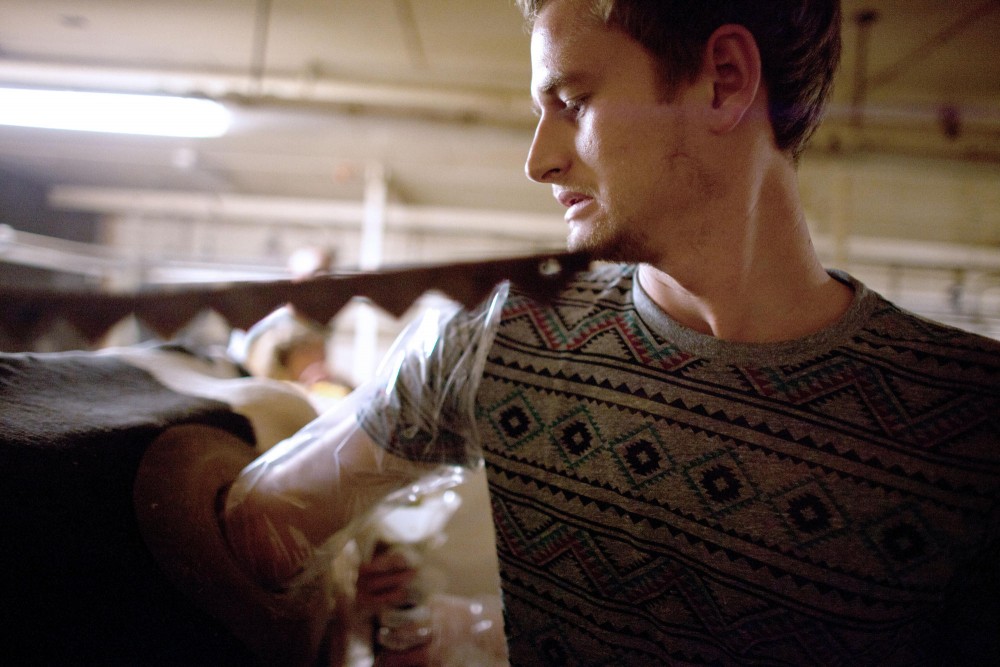Students at the University of Minnesota studying animal science and zoology got their hands dirty âÄî from reaching inside research cows during class on Tuesday.
Jordan Jirik, teaching assistant for an animal diversity lab at the University, led her class to the dairy cow barn to collect rumen, or stomach, samples.
Each of JirikâÄôs students put on plastic boots and arm covers and walked into the barn. After removing the cap on the cowâÄôs side, Jirik instructed the students to reach into the stomach and extract a rumen fluid sample. Each student took a turn entering the living, breathing cow and pulling out their sample.
ItâÄôs a day in the life of the four fistulated cows on the St. Paul campus.
A fistula is simply a hole, in this case a hole in the cowâÄôs rumen, or largest stomach.
Jane Phillips, a professor and co-director of the UniversityâÄôs biology program, said the University is one of several locations where fistulated cows can be found. She said it is not uncommon to see them used for research and education.
âÄúStudents have the advantage to use the animals hands-on,âÄù said animal nutrition professor Marshall Stern, adding that this sets the University apart from most sites.
In 1995, Stern developed the âÄú3 Step Procedure,âÄù a process used to measure protein absorption in a cowâÄôs small intestines. Before this procedure, data was very limited, he said. The National Research Council now uses the UniversityâÄôs research procedure to formulate recommended diets for cows.
To place the fistula, or hole, the cows undergo surgery, stitching the cowâÄôs stomach lining to the skin and then allowing it to heal. Then a removable cap is put on the hole, which allows outside access to the rumen.
Phillips explained that the cows are under anesthetics and feel virtually no pain during the surgery.
She said the cows have longer lives than most because the University uses them for research beyond their prime of six or seven years old, when most dairy cows would stop producing milk and be sent to slaughter.
The Institutional Animal Care and Use Committee approves all animal-related research scenarios at the University to ensure they are all treated well.
The UniversityâÄôs four fistulated cows are used primarily for rumen research but are also used briefly in the classroom setting, Phillips said.
Today, SternâÄôs research continues to shape cowsâÄô diets, but now the aim is for efficiency in rumen nutrition. Even though they have the cows, he said they also use eight fermenters that act as artificial rumen. He said research depends largely on fermenters because they keep the artificial system consistent, eliminating the genetic variation that would result from studying several natural cows.
The University has one of just three or four rumen simulators in the country, Stern said. Nutrition researchers use rumen samples to study the breakdown of proteins, carbohydrate digestion and fiber utilization. Researchers will explore what works most efficiently in the cowâÄôs system and find the advantages and disadvantages of different diets.
Stern said feed companies interested in learning how to make their feeds more efficient are turning to the University because of its rumen research.


